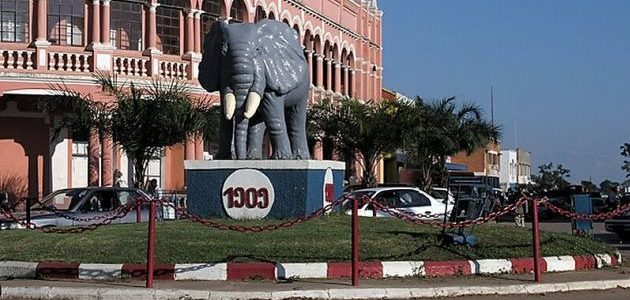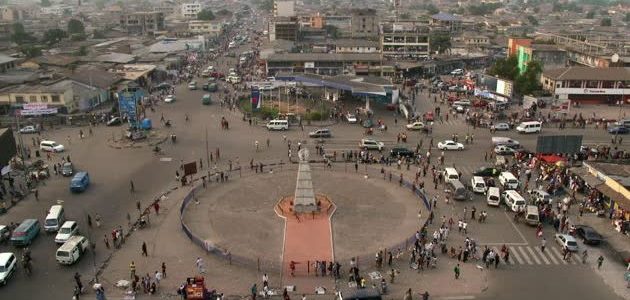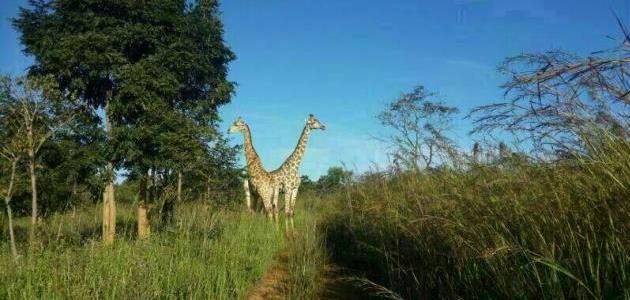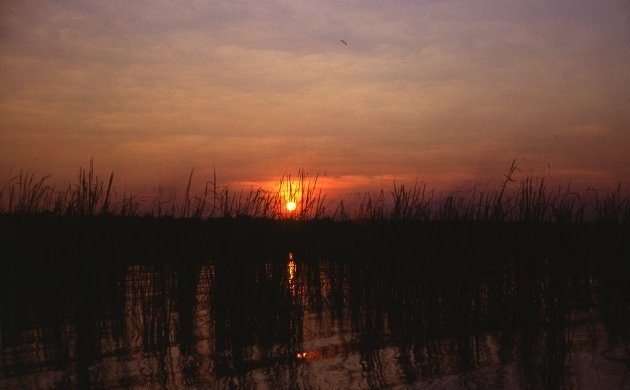Lubumbashi is situated in the southeastern part of Democratic Republic of the Congo. It is the second-largest city in the country after Kinshasa, which serves as the capital city. Lubumbashi is the mining capital of the Democratic Republic of the Congo, and is a hub for many of the country’s biggest mining companies. For the administration purpose, the copper-mining city serves as the capital of the prosperous Katanga Province and is near the border with Zambia.
With an estimated are of 747km², Lubumbashi, also the capital of Haut-Katanga has a charming history that is strongly linked to the European. The city is built on a site called Kalukuluku. This was named after a master copper smelter who produced crucibles there; Lubumbashi is the name of the river that flows through the city.
Historically, Lubumbashi has its dark past too. At independence, the town was plagued by unrest, before becoming the capital of the short-lived autonomous state of Katanga (1960-1963) led by Moïse Tshombe. It was at the entrance to the city that the deposed Prime Minister Patrice Emery Lubumba was assassinated on January 17, 1961. When Mobutu came to power in 1965, the town was renamed Lubumbashi, at the same time as Katanga became Shaba (“copper” in Swahili). Indeed, the town remains intimately linked to this precious mining resource, exploited from the outset at the Mine de l’Etoile.
After difficulties, mining activity has picked up again in the last fifteen years and Lubumbashi is once again enjoying its former glory. The charming rolling savannas that teemed with all the Big 5 animals in the mid-eighties, is a now cosmopolitan city where many nationalities live side by side in harmony owing to a good presence of the numerous expatriates who are in the mining and other sectors. Lubumbashi currently has a population of almost 2 million, making it the or largest city in the country, according to some estimates.L’shi, or Lubum to its friends, is divided into seven communes, six of which are urban (Lubumbashi, Kamalondo, Kenya, Katuba, Kampemba and Ruashi) and one urban-rural, known as the “annex commune”.
Compared to other cities in DR Congo, Lubumbashi is relatively clean and modern Boasting to have some of the widest streets in Africa with a much relaxed pace of life unlike in other parts of DR Congo. Lubumbashi, with extensive infrastructure and numerous ongoing construction projects is a gem to be appreciated.
Lubumbashi is an intellectual city thanks to the University of Lubumbashi (UNILU), that served as a political hotbed that managed to stage some student protests that turned bloody during the Mobutu Sese Seko era) and to date, Lubumbashi remains a city of various higher institutes in its territory.
Lubumbashi city and its surroundings offer a wealth of opportunities for to indulge into the beautiful miombo woodland and the savanna grassland settings. Its expansive metropolis boasts numerous leisure, educative and entertainment venues that range from accommodation, fitness, museums, a zoo and nature parks, numerous lakes and rivers and the notably affluent golf district that is located along Lake Tshombe (Lake Kipopo). To guests and the residents equally, Lushi or Lubum as it’s fondly knowns, is a city whose developmental milestones are sure commitment to peace and tranquility.
In Lubumbashi, French is the officially spoken language in the city alongside Kiswahili with a Congolese accent. Apart of Kiswahili and a plethora of local dialects, English is reasonably spoken in most of the business and residential districts that are highly dominated by the expatriates.
1. Where is Lubumbashi Located
Latitude and longitude coordinates are: -11.666667, 27.483334.
Lubumbashi is a large city situated in the southeastern area of the DR Congo, in the province of Haut-Katanga. With the population close to 1.8 million people, the city is the second largest in the country after the capital city. Historically a mining area, it is considered to be one of the most advanced and developed regions of the country.
2. Why visit Lubumbashi

Set on an off-the-beaten-track, Lubumbashi is welcoming and is full of adventure, ecotourism and culture. This vibrant city is known for its rich mining history, vibrant nightlife, and stunning rolling savanna landscapes.
Apart from the city excursions, ne of the must-visit attractions in Lubumbashi is the National Museum of Lubumbashi, which displays the region’s history and culture. You can also visit the nearby Ruashi Mine to learn about the city’s mining industry and see the impressive machinery used to extract copper and cobalt.
For those who enjoy the activities further afield, a visit to the Kundelungu National Park is highly recommended. This park is home to a diverse range of wildlife, including elephants, lions, and hippos. A hike to the top of Mount Kundelungu for breathtaking views of the park and the surrounding landscape is worth the climb.
For the cultural curiosity, a taste of the local culture, when you visit the Lubumbashi Market is a sure way to indulge in the Congolese culture. Here, you can find everything from fresh produce to handmade crafts and souvenirs. You can also sample the local cuisine, which is a fusion of African, European, and Indian flavors.
As the sun sets, head to one of Lubumbashi’s many bars and nightclubs to experience the city’s vibrant nightlife. From live rumba music to dancing, Lubumbashi offers something for everyone.
3. Getting to Lubumbashi

You can get to Lubumbashi, DRC by plane or by road.
By Air: Lubumbashi International Airport (FBM) is the main airport in Lubumbashi. Internationally, Lubumbashi International Airport (FBM) is served by several airlines such as Brussels Airlines, Kenya Airways, Ethiopian Airlines, Fly Air Link, FlyCAA and Air Tanzania to Lubumbashi from various cities around the world.
By road: If you are traveling within the country, there are several buses and taxis that run between Lubumbashi and other major cities. However, the roads in DRC are not always well maintained and can be difficult to tackle. We strongly advise that you be cautious if you choose to travel by road.
Additionally, it is important to have all the necessary travel documents, such as a valid passport and visa, if required. It is always a good idea to check with the local embassy or consulate for any travel restrictions or requirements before planning your DR Congo road trip. We can help you to hire a car if there is need to do so.
4. The best time to visit Lubumbashi

Lubumbashi has a tropical savanna climate with two distinct rainy and dry seasons. The best time to visit Lubumbashi is during the dry season, which occurs from May to September, as it is less rainy and temperatures are more comfortable. However, it is important to note that Lubumbashi is a tropical climate and temperatures remain high year-round, so be prepared for hot weather. Additionally, it is recommended to avoid travel during the rainy season, which occurs from October to April, as heavy rains can cause transportation disruptions and other challenges.
5. What to know before travelling to Lubumbashi, DR Congo

There are a few important things to take note of when traveling to Lubumbashi:
A Visa is required to visit and enter Lubumbashi in the Democratic Republic of Congo.
Visitors to the Democratic Republic of the Congo must obtain a visa from one of the Democratic Republic of the Congo diplomatic missions unless they come from a visa exempt country,
A country whose nationals can obtain a visa on arrival or eligible to obtain an e-visa online https://evisa.gouv.cd or are arriving from a country with no embassy, in which case they can obtain a visa confirmation followed by a 7-day visa on arrival (extendable in the DRC).
Visitors requiring a visa need to submit a legalised letter of invitation from a DRC person or organization. For tourists, a hotel booking confirmation is accepted in case the traveler has no contact in the DRC.
6. What to pack for your journey to Lubumbashi

Depending on what time of year you are traveling to Lubumbashi will influence what you need to pack.
Generally speaking, light layers of clothing in neutral safari-friendly colours of green, khaki and beige are the best items to bring with you. Dark colours such as navy or black can attract tsetse flies and other insects and should be best avoided, as are bright colours like yellow, red and purple if you are going on safari. A lightweight waterproof jacket is also recommended, with high humidity leading to occasional showers.
– Passport
– Yellow Fever vaccination certificate
– COVID-19 certificate
– Layers – long and short sleeve shirts and trousers
– A warm fleece or jumper
– A lightweight waterproof jacket
– Comfortable but sturdy shoes
– Leather gloves (there are stinging nettles in the parks especially if it involves a hike in the jungle)
– Gaiters
– Flip-flops
– Swimming costume
– A hat or baseball cap
– Sunglasses
– Sunscreen – a must!
– Toiletries – most camps will provide shampoo, shower gel and soap
– A small torch
– Spare batteries, plug adaptors and charging equipment
– A good pair of binoculars
Most of the accommodation facilities will have medical and first aid kit, but we recommend bringing your own supply of essentials – cough medicine, plasters, vitamins, aspirin and pain relievers, and anything else you use on a regular basis.
• A telephoto lens (200/300mm)
• Flash and fast film (400 ASA) for night photography
• Lots of film (64,100,200,400 ASA) if using an SLR camera
• Spare memory cards for digital cameras
• Camera cleaning equipment and a good dust proof bag
• Bring spare batteries as although you may recharge your batteries at the camps, charging capacity can be limited.
Many international airlines have a baggage allowance of 20 kg or more per person, but please check this with your preferred airline. Please be advised that on domestic flights, luggage is limited to one soft sided bag per person with a maximum weight of 15kg. No hard-shell bags are permitted.
7. Electricity

The Republic of the Congo uses type C and E plugs. The standard voltage is 230V and the standard frequency is 50 Hz. It is best to bring an adapter/convertor combination.
8. How to Get Around Lubumbashi

Lubumbashi has an extensive railway and public transportation system and is home to the new look and modern feeling, Lubumbashi Airport. It is best to inquire with your travel or booking agent on how to get around the City, as public transportation can be a bit overwhelming to some. Renting a car is also a good idea.
9. Attractions and places to visit in Lubumbashi

Lubumbashi is a unique destination in the Democratic Republic of Congo that is rich in history, culture, and natural attractions.
Lubumbashi is a city located in the southern part of the Democratic Republic of the Congo.
It is the second-largest city in the country and is the capital of the Haut-Katanga Province. The city is known for its mining industry, with copper and cobalt being two of the main resources extracted in the region.
Additionally, Lubumbashi is home to several universities, museums, and cultural centers. French is the official language spoken in the city, but Swahili and other local languages are also widely spoken. Lubumbashi has a tropical savanna climate with two distinct rainy and dry seasons. The best time to visit is during the cooler months of May to September.
Lubumbashi, Democratic Republic of Congo, offers a unique experience for travelers and is suitable for different types of travelers. Here are some details to help you decide who might enjoy while you are in Lubumbashi Top 10 Day Trip Activities Around Lubumbashi

Entrust our experts to plan for your Lubumbashi day trip experiences
Are you in Lubumbashi for a business meeting or one of those big conferences in DR Congo? Oluokos Signature team is available to organize for you personalized memorable excursions within Lubumbashi and tours beyond.
WhatsApp/+254726063884
Text/Call: +254755694434
Email: goeco@theoluokos.com